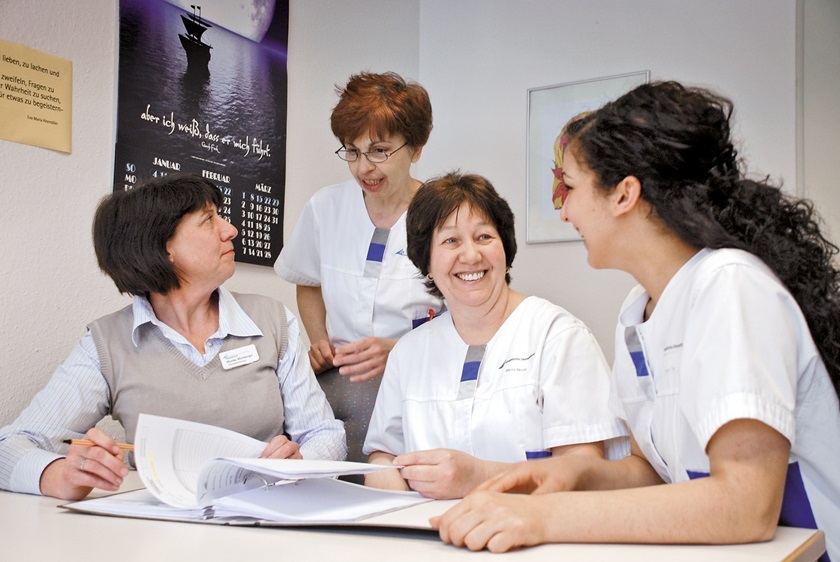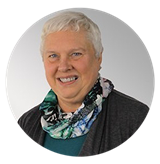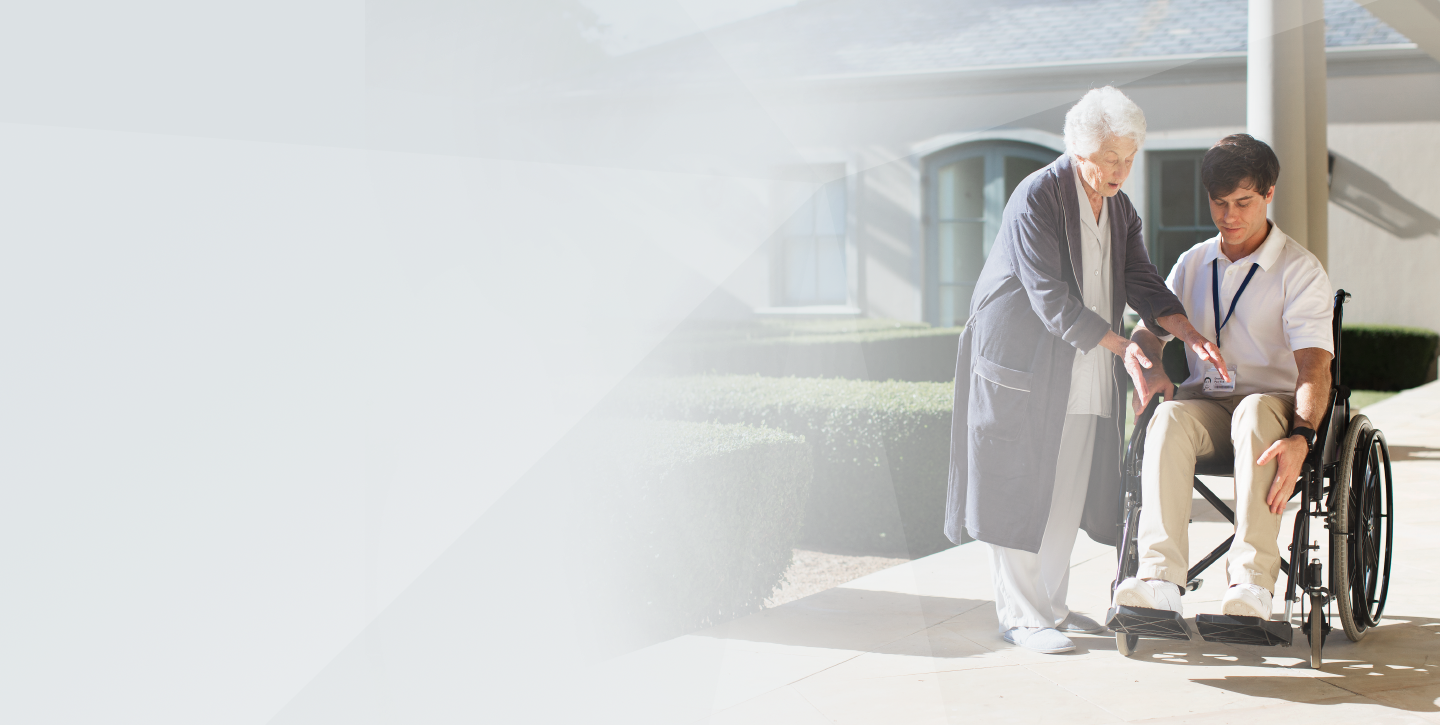Why is wound care education important? Mentor and ‘Initiative Chronische Wunde’ CEO Veronika Gerber shares her insights.
🕐 2:30 minutes
Effective wound care is more than the sum of its parts.
It’s physiological, it’s patient centric and it takes a multidisciplinary approach. However, what is most important is that the patient must be involved and convinced.
There is one specific case where I saw all of these pieces truly fit together.
It is the story of a young and hard-working farmer. She was a mother of three young children and an owner of a large agricultural business. She milked the cows in the mornings while supervising the children and managing the business. She was a dedicated worker, a devoted wife and mother, and a self-reliant entrepreneur. In fact, she was so busy, she did not notice the development of leg ulcers on her leg.
Following a trip to the wound centre, she received a treatment plan: compression therapy and adequate wound dressing. Immediately, you could see the leg wounds becoming smaller. Yet, as she continued treatment, the final healing stages had stagnated. We couldn’t find a reason as to why.
Well, during her first visit, the treatment team advised her to stop working in the barn. We put her in contact with an assistant that could manage her tasks on the farm while she healed. Given the commitment to her work, we considered that this advice may impact her emotionally. In one of the later treatment sessions, we asked her how things were going at home. The good news was that the kids were performing better at school because she had more time with them. The bad news, however, was that she did not want to keep the assistant.
It’s physiological, it’s patient centric and it takes a multidisciplinary approach. However, what is most important is that the patient must be involved and convinced.
There is one specific case where I saw all of these pieces truly fit together.
It is the story of a young and hard-working farmer. She was a mother of three young children and an owner of a large agricultural business. She milked the cows in the mornings while supervising the children and managing the business. She was a dedicated worker, a devoted wife and mother, and a self-reliant entrepreneur. In fact, she was so busy, she did not notice the development of leg ulcers on her leg.
Following a trip to the wound centre, she received a treatment plan: compression therapy and adequate wound dressing. Immediately, you could see the leg wounds becoming smaller. Yet, as she continued treatment, the final healing stages had stagnated. We couldn’t find a reason as to why.
Well, during her first visit, the treatment team advised her to stop working in the barn. We put her in contact with an assistant that could manage her tasks on the farm while she healed. Given the commitment to her work, we considered that this advice may impact her emotionally. In one of the later treatment sessions, we asked her how things were going at home. The good news was that the kids were performing better at school because she had more time with them. The bad news, however, was that she did not want to keep the assistant.
That first conversation with the patient was revealing, but we needed to dig a little deeper.
In the end, it was her husband that helped us to uncover the underlying issue. As it turned out, she didn’t want to be accused of being a “lazy” spouse, so she had continued to work in the barn. After speaking with the husband however, we learned that he was happy with the progress of her healing. More so, he was happier with the impact it had on the household.
Long story short: they decided to keep the assistant.
The farmer’s legs continued to heal, and I learned one important lesson. Healing a wound does not begin with the wound itself. You have to put all the pieces together, like a puzzle.
This means understanding the needs and feelings of the patient, engaging the people that are involved in the patient’s life, and combining the expertise of the professionals to ensure the best care for the patient.

Best practices are meant for sharing
But putting the pieces together can be hard. Especially if you don’t know where to start.
This holds true especially with leg ulcers. Diagnostics is heavily neglected and a lack of knowledge is prevalent. This results in taking up to several years until a leg ulcer is correctly diagnosed.
Rising rates of chronic conditions and aging populations do not help the state of affairs for wound care demand. In the future, the majority of healthcare professionals will be responsible for managing chronic wounds at any given point in time. Look at it this way: If someone is admitted as an in-patient because they have an eye infection, they don't leave their foot ulcer at home. From ENT to urology, it is crucial to have staff members who can be consulted when wound patients walk through the door.
But there’s a catch. GPs can't send all patients to a specialist. Additionally, not every senior wants to go to another doctor. As I see it, it is becoming increasingly important to have relevant knowledge and reliable resources available and easily accessible.
There is a saying: “knowledge increases only by sharing, not saving.” And knowledge-sharing, especially in the practice of wound care, is at the heart of what we do.
Established in 2005, the Initiative for Chronic Wounds (ICW) currently has 40 regional working groups across Germany. We are nurses, clinicians, specialists, general practitioners, and researchers who meet regularly to exchange ideas, network, and examine methods to optimise and harmonise knowledge-sharing. We build interprofessional teams and are home to 150 certified wound care training providers across Germany.
But putting the pieces together can be hard. Especially if you don’t know where to start.
This holds true especially with leg ulcers. Diagnostics is heavily neglected and a lack of knowledge is prevalent. This results in taking up to several years until a leg ulcer is correctly diagnosed.
Rising rates of chronic conditions and aging populations do not help the state of affairs for wound care demand. In the future, the majority of healthcare professionals will be responsible for managing chronic wounds at any given point in time. Look at it this way: If someone is admitted as an in-patient because they have an eye infection, they don't leave their foot ulcer at home. From ENT to urology, it is crucial to have staff members who can be consulted when wound patients walk through the door.
But there’s a catch. GPs can't send all patients to a specialist. Additionally, not every senior wants to go to another doctor. As I see it, it is becoming increasingly important to have relevant knowledge and reliable resources available and easily accessible.
There is a saying: “knowledge increases only by sharing, not saving.” And knowledge-sharing, especially in the practice of wound care, is at the heart of what we do.
Established in 2005, the Initiative for Chronic Wounds (ICW) currently has 40 regional working groups across Germany. We are nurses, clinicians, specialists, general practitioners, and researchers who meet regularly to exchange ideas, network, and examine methods to optimise and harmonise knowledge-sharing. We build interprofessional teams and are home to 150 certified wound care training providers across Germany.

Our partnership program in China, held in collaboration with HARTMANN Wound Management, is designed for two months. This way, participants have the opportunity put their theoretical knowledge into clinical practice. To date, the ICW has certified 35,000 wound experts in Germany, and more than 300 “Wundexperte” certifications of nurses in China across 61 cities. Communicating with the patient is a big part of our curriculum.

So, what’s the difference between wound education today and yesterday?
I received my formal education and training as a paediatric nurse in 1976 at the University Clinic in Düsseldorf. At that time, there was nothing in the programme explicitly addressing the management of chronic wounds. Plainly stated, I taught myself the ABC’s of wound healing. Over the course of twenty years, I worked in several clinics in Germany where I realized that healthcare professionals had limited to no knowledge of wound management. During those years, I developed in-house wound trainings from scratch.
But today, HCPs have a range of options.
There are programs in place, corporate training offerings, and even wound education options online. But it’s not enough. Remember, chronic conditions are rising. The amount of wound cases will naturally increase. Patients will come from different backgrounds. And as a result, your education must continue. You must keep growing. You have to keep learning…and learning from one another.
If chronic wound care is indeed a puzzle, practitioners with the knowledge, skills, and experience have the first piece. So let’s put the pieces together for our patients. Because, today, now, more than ever is the time to LINK [Learn. Inform. Network. Knowledge.].

CEO, Initiative Chronische Wunde e.V.
Veronika Gerber
Veronika Gerber is the CEO and a founding member of the Initiative for Chronic Wounds (ICW), a German wound-healing association. She began her career as a paediatric nurse in Düsseldorf, and has since committed to making wound care education accessible to every healthcare professional.
